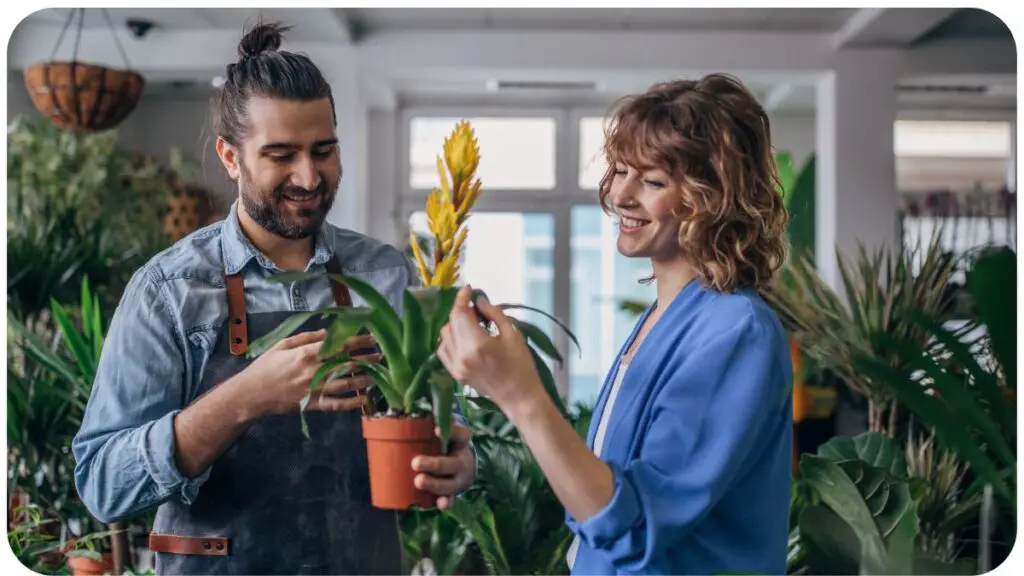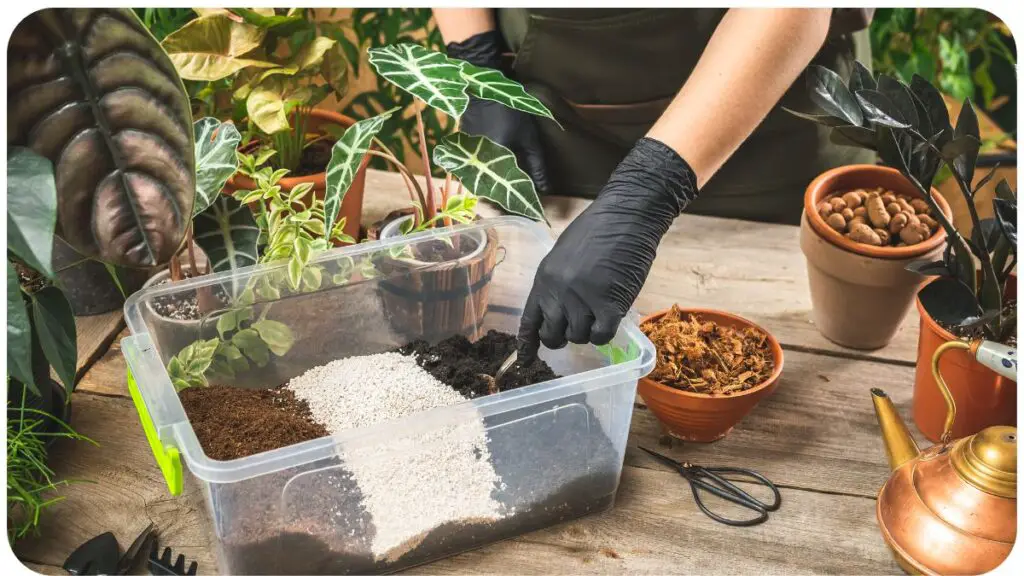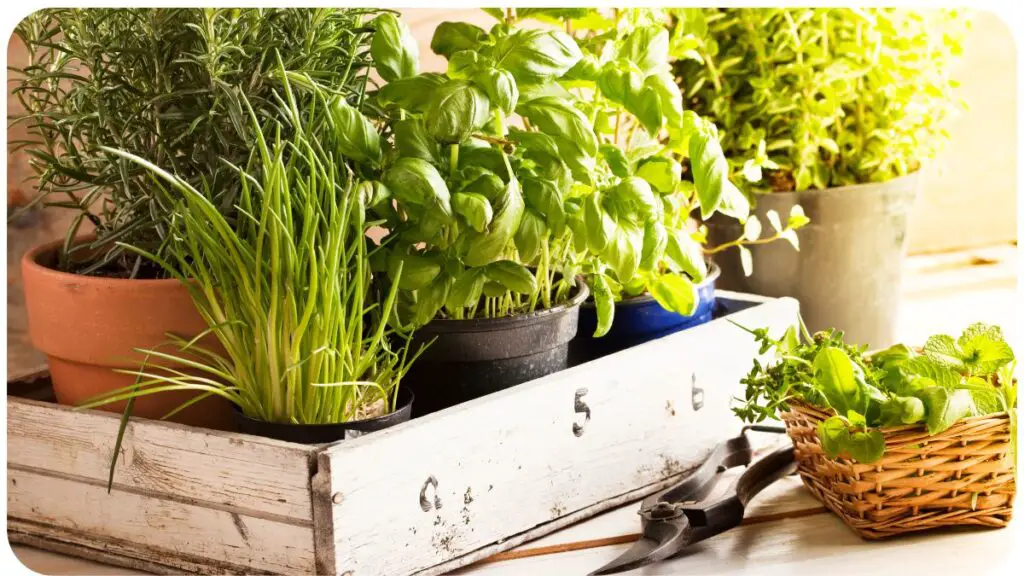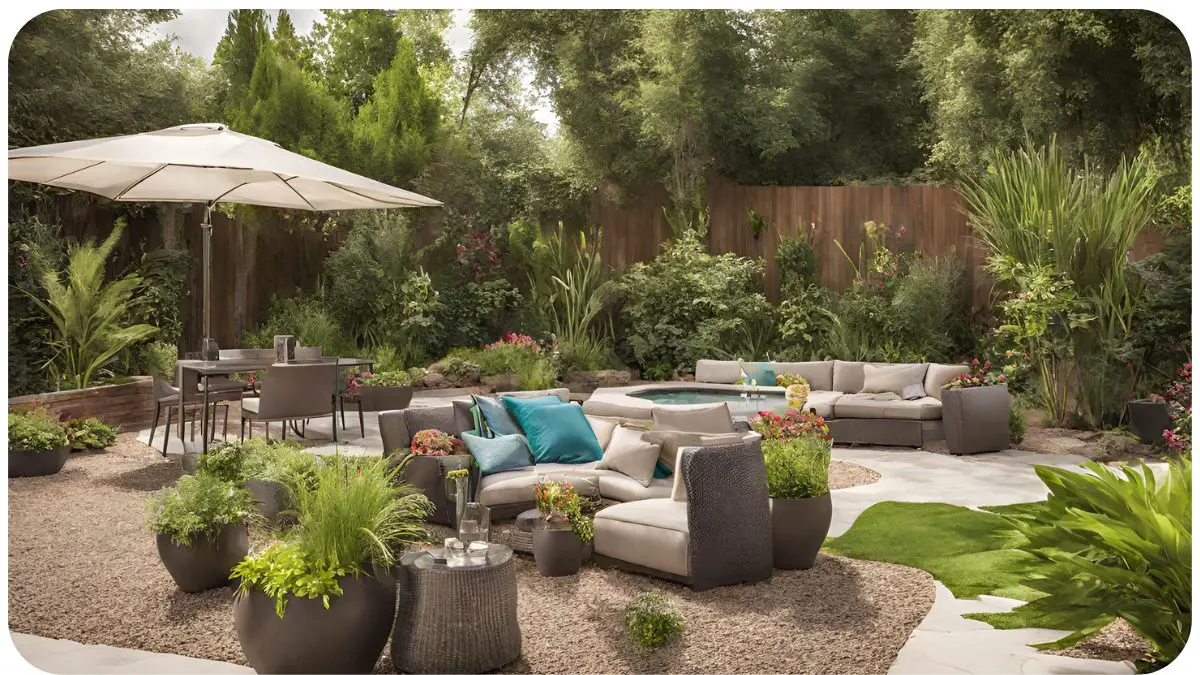Creating a lush oasis in your home doesn’t have to drain your bank account. With the right hacks and techniques, you can transform any space into a thriving botanical paradise without breaking the bank. In this guide, we’ll explore budget-friendly strategies for nurturing healthy plants and creating an inviting indoor garden.
| Takeaways |
|---|
| 1. Implement clever water conservation techniques. |
| 2. Create a beautiful backyard on a budget. |
| 3. Learn to manage common indoor plant pests. |
| 4. Explore easy propagation methods for indoor plants. |
| 5. Use budget-friendly alternatives for fertilizing. |
1. Assessing Your Space
Before diving into plant selection and care, it’s essential to assess your space’s environmental conditions. Different areas of your home may vary in light exposure, humidity levels, and temperature fluctuations. Use the following checklist to evaluate your space:
Black plastic proves effective for weed control, acting as a barrier to hinder unwanted growth. By blocking sunlight and inhibiting weed sprouting, it fosters a healthier garden environment.” Harnessing the power of black plastic is a budget-friendly strategy with long-term benefits.
Table: Space Assessment Checklist
| Aspect | Ideal Conditions |
|---|---|
| Light Exposure | Bright, indirect sunlight |
| Temperature | Consistent, moderate |
| Humidity Levels | Moderate to high |
| Air Circulation | Adequate airflow |
2. Choosing the Right Plants

Selecting the right plants for your indoor garden is crucial for success. Consider the lighting conditions in your space and choose plants that thrive in those environments.
Table: Plant Options for Different Light Conditions
| Light Conditions | Plant Options |
|---|---|
| Bright Indirect Light | Snake Plant, Pothos, Spider Plant |
| Moderate Light | Peace Lily, Chinese Evergreen, Philodendron |
| Low Light | ZZ Plant, Cast Iron Plant, Snake Plant |
3. Smart Watering Techniques
Proper watering is essential for maintaining healthy plants, but it’s easy to overwater or underwater if you’re not careful. By following smart watering techniques, you can ensure your plants receive just the right amount of moisture they need to thrive.
Epsom salt, vinegar, and dish soap combine to form an effective DIY weed killer. This natural solution eliminates weeds without harsh chemicals, keeping your garden safe and flourishing.” 3-ingredient recipe with Epsom salt offers an eco-friendly alternative for weed management.
Table: Watering Schedule for Common Houseplants
| Plant | Watering Frequency |
|---|---|
| Snake Plant | Every 2-3 weeks |
| Pothos | Every 1-2 weeks |
| Spider Plant | Every 1-2 weeks |
| Peace Lily | Every 1-2 weeks |
| Chinese Evergreen | Every 1-2 weeks |
| Philodendron | Every 1-2 weeks |
| ZZ Plant | Every 2-3 weeks |
| Cast Iron Plant | Every 2-3 weeks |
4. DIY Potting Mixes

Commercial potting mixes can be expensive, but you can create your own budget-friendly mixes using readily available ingredients. DIY potting mixes allow you to customize the soil composition to meet the specific needs of your plants.
Table: Ingredients for Homemade Potting Mixes
| Component | Purpose |
|---|---|
| Peat Moss | Retains moisture and improves soil structure |
| Perlite | Enhances drainage and aeration |
| Vermiculite | Improves water retention and nutrient exchange |
| Compost | Adds organic matter and nutrients to the soil |
| Sand | Improves drainage in heavy soils |
Creating your own potting mix not only saves money but also gives you greater control over the quality of the soil your plants are growing in.
5. Creative Container Ideas
Choosing the right containers for your indoor plants is not only functional but also adds to the aesthetic appeal of your space. Get creative with container options to enhance the visual impact of your indoor garden while staying within your budget.
Table: Container Options for Indoor Gardens
| Container Material | Advantages |
|---|---|
| Terra Cotta | Affordable and allows for breathability |
| Ceramic | Stylish and available in various designs |
| Plastic | Lightweight and easy to clean |
| Wood | Adds a rustic charm to your space |
| Upcycled Items | Repurpose old containers for a unique look |
7. Maximizing Natural Light
Take advantage of natural light sources in your home to provide optimal conditions for your indoor plants. Positioning your plants near windows or skylights can help them thrive without the need for additional lighting.
Optimize your lawn mower’s performance with these top 10 additives for removing water from the gas tank. Prevent engine damage and ensure smooth operation throughout the mowing season.” Remove water from your lawn mower gas tank to maintain your equipment’s longevity and efficiency.
8. Supplementing with Grow Lights
In spaces with limited natural light, supplementing with grow lights can ensure your plants receive adequate light for healthy growth. When choosing grow lights, consider factors such as light intensity, spectrum, and energy efficiency.
Table: Comparison of Grow Light Types
| Grow Light Type | Light Spectrum | Energy Efficiency | Suitable For |
|---|---|---|---|
| Fluorescent | Cool white, Full | Moderate | Low to Medium Light |
| LED | Full Spectrum | High | All Light Conditions |
| HID | Warm white | Low to Moderate | High Light Requirements |
9. Humidity Hacks
Maintaining the right humidity levels is crucial for many houseplants, especially tropical varieties that thrive in moist environments. Here are some simple hacks to increase humidity for your indoor plants without investing in expensive equipment.
Table: Ways to Increase Humidity for Houseplants
| Method | Description |
|---|---|
| Pebble Tray | Place plants on a tray filled with water and pebbles |
| Grouping Plants Together | Grouping plants creates a microclimate with higher humidity |
| Misting | Mist plants with water to increase humidity temporarily |
| Bathroom Oasis | Bring plants into the bathroom during showers for added moisture |
10. Pest Prevention and Management
Dealing with pests can be a common challenge for indoor gardeners, but there are several strategies you can employ to prevent infestations and manage pests effectively.
Bid farewell to grub worms in your flower beds with effective strategies for eradication. Protect your plants’ roots and promote healthier growth by addressing this common garden pest.” Get rid of grub worms in your flower beds to cultivate a thriving garden ecosystem.
Table: Common Houseplant Pests and Solutions
| Pest | Signs of Infestation | Prevention and Management |
|---|---|---|
| Aphids | Small, soft-bodied insects | Remove affected leaves, apply insecticidal soap |
| Spider Mites | Webbing on leaves | Increase humidity, spray with water or neem oil |
| Mealybugs | White, cottony masses | Wipe with alcohol-soaked cotton swab, apply insecticidal soap |
| Fungus Gnats | Small, black flies | Allow soil to dry between waterings, use sticky traps |
| Scale Insects | Hard, shell-like coverings | Scrub with alcohol-soaked cotton swab, apply insecticidal soap |
By identifying signs of pest infestation early and taking prompt action, you can prevent damage to your plants and keep your indoor garden healthy.
11. Pruning and Maintenance Tips

Regular pruning and maintenance are essential for keeping your indoor plants healthy and thriving. By removing dead or diseased foliage and encouraging new growth, you can promote plant vitality and prevent overcrowding.
12. Propagation Made Easy
Propagation is a cost-effective way to expand your indoor plant collection and share your favorite varieties with friends and family. With a few simple techniques, you can propagate many houseplants from cuttings or divisions.
Table: Propagation Methods for Common Houseplants
| Plant | Propagation Method |
|---|---|
| Pothos | Stem cuttings in water |
| Snake Plant | Leaf cuttings or division |
| Spider Plant | Offsets or baby spiderettes |
| Philodendron | Stem cuttings in soil |
| ZZ Plant | Rhizome division |
Experiment with different propagation methods to find what works best for each plant species and enjoy watching your indoor garden grow.
13. Budget-Friendly Fertilizing
Fertilizing your indoor plants is essential for providing them with the nutrients they need to thrive. However, you don’t need to spend a fortune on commercial fertilizers. There are plenty of budget-friendly options and DIY solutions that can nourish your plants without breaking the bank.
Achieve successful urban gardening with these seven expert tips. Harvest fresh produce at home and maximize your space for cultivating a diverse range of plants.” 7 tips for successful urban grow to transform your living space into a vibrant green oasis.
Table: DIY Fertilizer Ingredients and Ratios
| Ingredient | Purpose | Ratio |
|---|---|---|
| Coffee Grounds | Adds nitrogen | 1:10 (grounds:soil) |
| Eggshells | Provides calcium | Crush and sprinkle on soil |
| Banana Peel | Rich in potassium | Chop and bury in soil |
| Epsom Salt | Boosts magnesium levels | 1 tablespoon per gallon of water |
By utilizing household items and natural ingredients, you can create effective fertilizers to keep your indoor garden flourishing on a budget.
14. Reviving and Rehabilitating Plants
Sometimes, despite our best efforts, indoor plants can become stressed or damaged. Knowing how to revive and rehabilitate struggling plants can make all the difference in restoring them to their former glory.
15. Conclusion
Creating a lush oasis in your home doesn’t have to be expensive or complicated. By implementing these hacks for a lush oasis without breaking the bank, you can transform any space into a thriving indoor garden without breaking the bank. From assessing your space and choosing the right plants to smart watering techniques and budget-friendly fertilizing, there are plenty of strategies to help you achieve your indoor gardening goals on a budget.
Remember to assess your space, choose plants that thrive in your environment, and utilize budget-friendly techniques like DIY potting mixes and natural fertilizers. With a little creativity and ingenuity, you can create a beautiful and thriving indoor garden that brings joy and tranquility to your home.
Further Reading
- Clever Hacks to Conserve Water in Your Sydney Garden: Learn innovative techniques to save water and maintain a lush garden in Sydney.
- The Backyard You Want Without Spending Big Money: Discover tips and tricks for creating a beautiful backyard oasis on a budget.
FAQs
How can I create a lush oasis in my home without spending a lot of money?
By implementing budget-friendly hacks such as DIY potting mixes, utilizing natural fertilizers, and choosing low-maintenance plants, you can create a lush oasis without breaking the bank.
What are some common pests that can affect indoor plants, and how can I manage them?
Common indoor plant pests include aphids, spider mites, mealybugs, fungus gnats, and scale insects. You can manage them by using natural remedies like insecticidal soap, increasing humidity, and practicing good plant hygiene.
What are some easy propagation methods for indoor plants?
You can propagate indoor plants through stem cuttings, leaf cuttings, division, offsets, and rhizome division. Each method has its own requirements, but they are generally simple and effective ways to expand your plant collection.
How often should I water my indoor plants?
The frequency of watering depends on factors like the plant species, environmental conditions, and potting mix. Generally, it’s best to water when the top inch of soil feels dry, but specific recommendations may vary for different plants.
What are some budget-friendly alternatives to commercial fertilizers?
You can use household items like coffee grounds, eggshells, banana peels, and Epsom salt to create DIY fertilizers for your indoor plants. These natural ingredients provide essential nutrients to support plant growth without the need for expensive commercial products.

For 15 years, Hellen James has worked in the gardening industry as an expert and landscape designer. During her career, she has worked for a variety of businesses that specialize in landscaping and gardening from small firms to large corporations.

